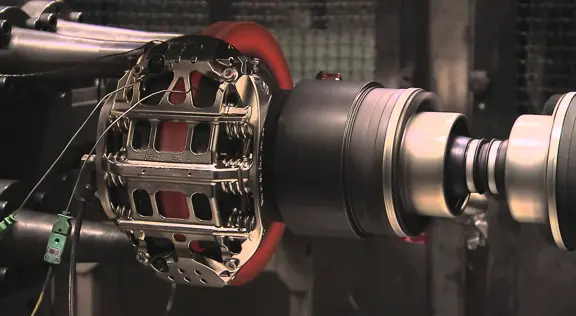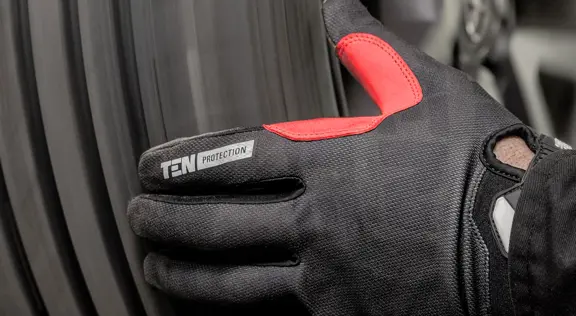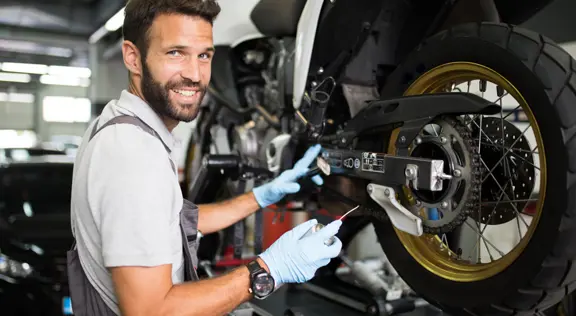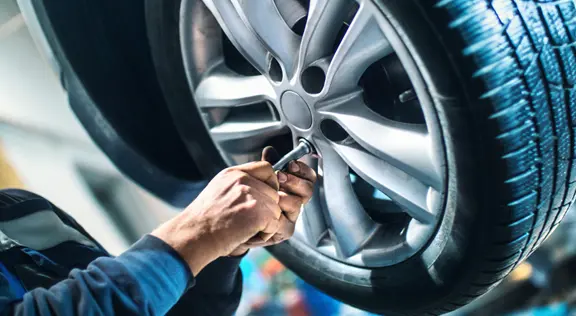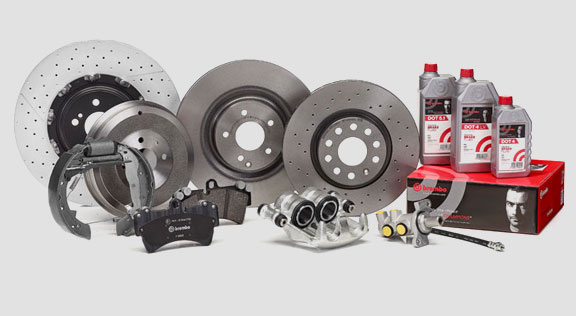Which is the right brake fluid for my car?
When should I replace it? Are brake fluids interchangeable?
The correct functioning of the braking system not only depends on the maintenance of its mechanical and hydraulic components, but also on the quality of the brake fluid that needs to transform the mechanical pressing of the pedal into hydraulic pressure in the brake caliper.
In addition to having this vital role, brake fluid is also in charge of keeping the braking system lubricated and preserving its components against corrosion.
When?
It is usually advisable to replace the brake fluid according to the Manufacturer’s specific recommendations, which may vary depending on the type of product used. The deterioration of brake fluid is quite fast, even in the presence of minimal quantities of water and so, as a general rule, we recommend you replace it after a time period of between 2 and 3 years.
As time goes by, brake fluid tends to absorb external moisture through the porosity of brake pipes. This leads to a progressive deterioration of its original characteristics, especially the boiling point, which in a 3-year-old brake fluid may be considerably lower than that of a brand-new brake fluid. This leads to a less rapid response when braking and, in some cases, pressing the brake pedal has no effect: this is called the Vapour Lock effect, with the brake fluid boiling as it reaches high temperatures when braking.
What’s more, brake fluid should ideally be clear and clean. Dark and cloudy brake fluid indicates it has accumulated impurities and that it’s time to replace it.
As time goes by, brake fluid tends to absorb external moisture through the porosity of brake pipes. This leads to a progressive deterioration of its original characteristics, especially the boiling point, which in a 3-year-old brake fluid may be considerably lower than that of a brand-new brake fluid. This leads to a less rapid response when braking and, in some cases, pressing the brake pedal has no effect: this is called the Vapour Lock effect, with the brake fluid boiling as it reaches high temperatures when braking.
What’s more, brake fluid should ideally be clear and clean. Dark and cloudy brake fluid indicates it has accumulated impurities and that it’s time to replace it.
Which one?
You can check the right brake fluid for your car in the maintenance handbook.
Generally, DOT 4 and DOT 4 Low viscosity brake fluids meet the technical requirements of 90% of cars circulating in Europe and world-wide.
Brembo DOT 4 brake fluid is suitable for use on all cars, from the oldest to the most recent models, including those fitted with anti-lock braking systems (ABS).
For latest-generation cars which in addition to ABS also feature stability or traction control systems (ESP, ASR, TCS, EBD), we suggest an even better-performing fluid, especially in terms of viscosity at low temperatures. We mean the Brembo DOT 4 LV (Low viscosity) brake fluid.
In these electronic systems, the fluid flows through control mechanisms (generally these are valves with very narrow passageways) and it is vital for the fluid to flow smoothly specifically due to the need for precise and immediate transfer of pressure.
For users who prefer a sportier use of their car and its brakes, as an alternative to our DOT 4 LV we suggest using DOT 5.1, which however, owing to its characteristics, requires even more careful maintenance than DOT 4 fluids.
Generally, DOT 4 and DOT 4 Low viscosity brake fluids meet the technical requirements of 90% of cars circulating in Europe and world-wide.
Brembo DOT 4 brake fluid is suitable for use on all cars, from the oldest to the most recent models, including those fitted with anti-lock braking systems (ABS).
For latest-generation cars which in addition to ABS also feature stability or traction control systems (ESP, ASR, TCS, EBD), we suggest an even better-performing fluid, especially in terms of viscosity at low temperatures. We mean the Brembo DOT 4 LV (Low viscosity) brake fluid.
In these electronic systems, the fluid flows through control mechanisms (generally these are valves with very narrow passageways) and it is vital for the fluid to flow smoothly specifically due to the need for precise and immediate transfer of pressure.
For users who prefer a sportier use of their car and its brakes, as an alternative to our DOT 4 LV we suggest using DOT 5.1, which however, owing to its characteristics, requires even more careful maintenance than DOT 4 fluids.
Are brake fluids interchangeable?
Car braking systems are designed to use a specific type of fluid. So, the car should continue to use that particular type of fluid for the rest of its service life, specifically because the internal components of the braking system have been designed, selected and tested to operate with that particular fluid. Although DOT 3 and DOT 4 fluids are all glycol-based, the chemical composition of each type of fluid is different, so it will have a different effect on the system. To make sure the system works as it should, the best thing to do is to keep using the brake fluid recommended by the manufacturer.
Alternatively, if you feel the need to improve the performance of your brakes, you can use a brake fluid with better specifications than the original ones.
Therefore, it is perfectly all right to switch, for instance, from DOT 3 to DOT 4, or from DOT 4 to DOT 4LV. In some cases, it is even advisable. However, it would be dangerous to switch to a lower DOT than the one recommended by the manufacturer.
To find out more
What brake fluid does and why its maintenance is important:
Is there anything else you want to ask?
Contact the Brembo technical support team. Our technicians will get back to you as soon as possible!
